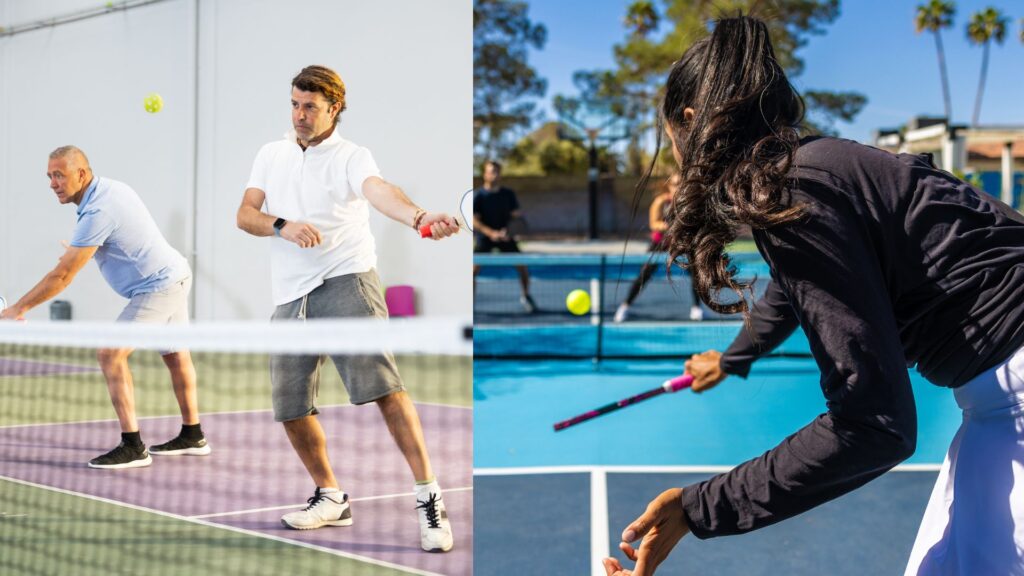Introduction
Pickleball has exploded in popularity across the country — and towns like Billerica, MA are no exception. Whether you’re a homeowner looking to upgrade your backyard court or a facility manager resurfacing your sport complex, one question always comes up: what’s the best surface for a pickleball court?
Choosing the right court material isn’t just about aesthetics — it affects player performance, safety, durability, and maintenance. A proper pickleball court resurfacing in Billerica can extend the life of your court while offering consistent bounce and traction.
Let’s dive into the pros and cons of different sport court coating options and why your surface selection matters more than you think.
What Is the Best Surface for a Pickleball Court?
Indoor vs. Outdoor Pickleball Court Surfaces

Indoor courts typically use wood or smooth synthetic materials, but outdoor courts need to be far more durable. In Billerica, where your court needs to withstand freezing temperatures and New England weather conditions, outdoor surfaces like acrylic-coated asphalt are the top choice.
Common Surface Types (Acrylic, Asphalt, Concrete)
- Acrylic Coating – Most popular for pickleball court resurfacing in Billerica. Offers excellent traction, UV resistance, and can be customized in various court colors.
- Asphalt – A strong base layer used in many outdoor court resurfacing projects. Affordable and durable.
- Concrete – More rigid than asphalt and may develop surface cracks without proper coating. Not ideal unless combined with an acrylic overlay.
If you’re resurfacing a court that’s exposed to the elements, acrylic-over-asphalt provides the best balance between performance, safety, and longevity. That’s why it’s the go-to choice for most sport court resurfacing projects in Billerica.
Why Surface Material Matters for Pickleball Performance
The type of surface you choose has a direct impact on how the game is played — especially when it comes to traction, bounce, and safety. If you’re investing in a pickleball court coating project, it’s important to understand how different materials affect the player experience.
Traction, Bounce, and Player Safety
- Consistent bounce – so players can predict ball behavior and respond faster.
- Proper traction – to reduce slips and falls during quick side-to-side movements.
- Shock absorption – especially important for older players or those with joint issues.
Weather Resistance and Longevity
Acrylic vs. Asphalt: Which Surface Lasts Longer?
When choosing between acrylic and asphalt for your pickleball court resurfacing in Billerica, it’s important to understand the role each material plays. These two components are often used together, but they serve different functions.
Benefits of Acrylic Coatings for Pickleball
- Provide vibrant color options and clear line striping
- Improve traction and reduce surface glare
- Add a weather-resistant layer that protects the base
- Enhance player performance with controlled bounce and speed
Pros and Cons of Asphalt Base Courts
- Prevent cracking from freeze-thaw cycles
- Reduce water absorption
- Minimize surface wear over time
How Weather in Billerica, MA Affects Your Court Surface
New England weather isn’t exactly gentle on outdoor surfaces — and Billerica, MA is no exception. From heavy snowfall in the winter to hot, humid summers, your pickleball court surface faces year-round abuse that can shorten its lifespan if not properly maintained.
Seasonal Impact on Coating Durability
- Winter: Freeze-thaw cycles can cause small cracks in your asphalt base, which expand over time and damage your acrylic coating.
- Spring: Excess moisture can seep into unsealed surfaces, leading to mildew buildup or surface bubbling.
- Summer: UV rays can break down poor-quality coatings, causing fading and surface degradation.
Tips for Maintaining Surfaces in New England Climate
- Invest in annual inspections and minor court crack repairs
- Keep the surface clean of dirt, leaves, and standing water
- Reapply coatings or sealants every 5–7 years, depending on usage
- Work with a sport court maintenance company in Billerica that understands the local climate
How Often Should You Resurface a Pickleball Court?
Whether you’re managing a community court or have one in your backyard, knowing when to resurface is key to maintaining both playability and safety. In general, pickleball court resurfacing should occur every 4–8 years, depending on usage, weather conditions, and maintenance habits.
Signs Your Court Needs Resurfacing
- Visible cracks or surface peeling
- Faded court lines or dull coloring
- Uneven bounce or dead spots
- Water pooling after rain
- Surface slipperiness, especially when wet
Resurfacing Frequency Recommendations
- Low-traffic residential courts: Every 6–8 years
- Moderate-use community courts: Every 5–6 years
- High-use or tournament-level courts: Every 3–4 years

